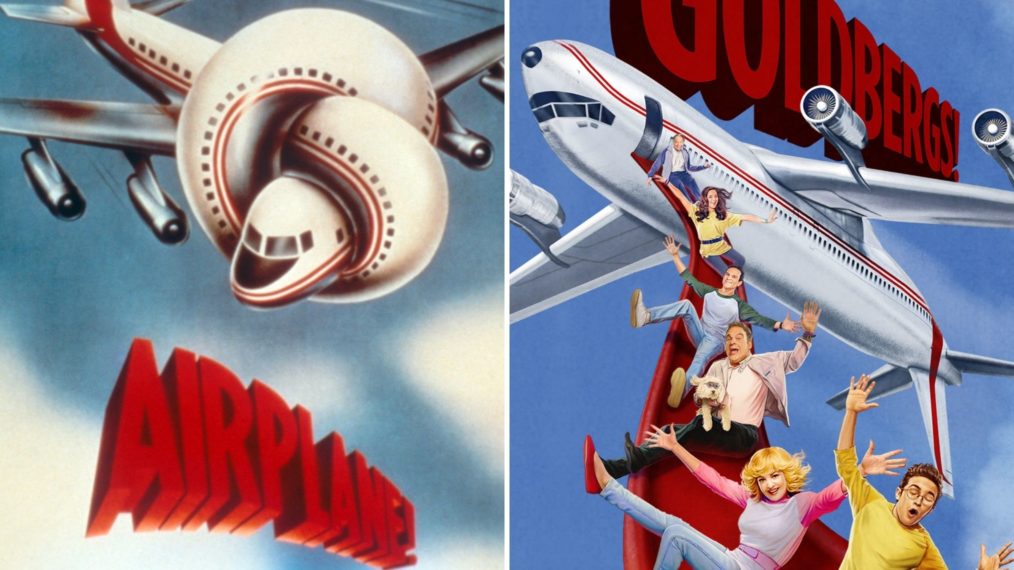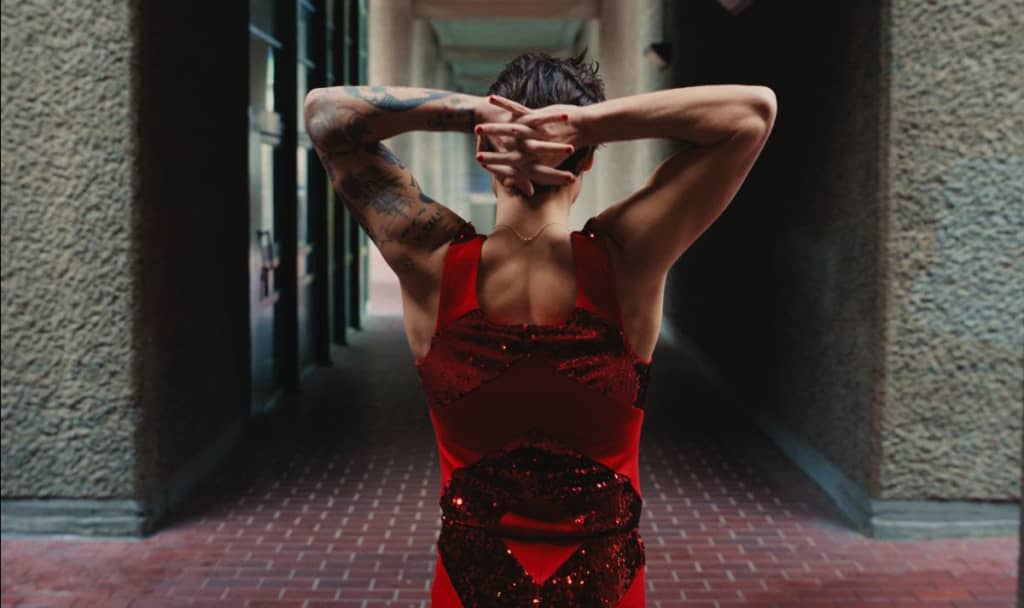#“To Be in Hollywood Is to Be Gaslit”: Justin Simien Levels Up With Disney’s ‘Haunted Mansion’ at a Fraught Time

Filmmaker Justin Simien was the main attraction at the July 15 red carpet premiere of his latest effort, The Haunted Mansion. But it wasn’t because he arrived in a floor-length cape, his tribute to the movie’s costume designer. It was because the hours-old SAG-AFTRA strike prevented his starry cast — LaKeith Stanfield, Tiffany Haddish and Jamie Lee Curtis among them — from joining. “‘Bittersweet’ is probably the best word for it,” the 40-year-old director explains two days later in his modest Los Angeles office. “I’m glad we got to show the movie [out July 28] — but with the strike and the Bob Iger comments, I feel like I crash-landed into [the event].”
Simien, like so many in Hollywood, is playing professional Whac-a-Mole this summer. Paramount TV suspended his Culture Machine shingle’s overall deal in May because of the stalemate between the studios and the WGA. He launched a GoFundMe to keep the lights on but still only expects his six-person team can stay intact through the fall if nothing changes.
A former film publicist who segued to a career as a writer-director with the 2014 indie feature Dear White People and the subsequent Netflix series of the same name, Simien does work that regularly generates critical adoration but not always paydays. He’s grown used to the uncertainty but suggests the town is due for a hard reset.
With actors doing zero promotion, that weight falls to you. What kind of impact do you think that will have on a theatrical release?
Pretty dramatic. This is a big ensemble. It’s not a sequel to that first movie or a remake. It’s not building on an existing audience. We need publicity. We need word-of-mouth. This is going to hurt it.
Do you find it tricky navigating this as a member of the WGA and DGA?

Photographed by Yasara Gunawardena
Because I’m in the DGA, which made a deal with the AMPTP, I am obligated by my Disney contract to promote the movie. That sucks because I know how that might look to some people. But I also know how it feels to fight for something that I believe in within the very system that I’m fighting. I’m a Black gay man in America, so it’s not the first time by any stretch. But, look at me. I’m making this hundred-plus-million-dollar movie. That’s ancestors’ wildest-dream stuff.
You made this hundred-plus-million-dollar movie after being indie filmmaker guy and a four-season stint as a showrunner. How’d that happen?
I was having real trouble getting a lot made after Dear White People. Part of why I leaned into the [Dear White People] series is because it was so hard to get a second movie off the ground. Dear White People was a big deal, yet we didn’t sell out of Sundance. The movie sold several months later, and not even for more than we made it for … and we made it for nothing. (Laughs.)The movie generated money, and the series has generated a ton of money — but the artist doesn’t get that. It’s lovely to have people say nice things about my work, but there was no financial model for me to actually make money off of the nice things people were saying. There were other things I tried to do, overtly queer things, and I struggled to get them made.
How do you make a scary movie for families that won’t scar children?
The fun part about Disney is that their great movies do scare children — but in the best way. I was like, “The scariest movie y’all ever made was Snow White.” It’s terrifying. Pinocchio? Terrifying. And let’s not forget that Mr. Toad’s Wild Ride takes you to actual hell on the [Disneyland] ride. There’s a darkness in all Disney content. That’s part of why it’s so provocative and why it made so many queer artists grow up wanting to make Disney movies.
You’re launching a Disney movie as its CEO is getting considerable blowback for calling guild demands “not realistic.” What is your take on Bob Iger’s comments?
Really unfortunate. I’ve never met him. I have this fantasy that we’ll sit down and have a very civil conversation about how what he said went over in the artist community. I just keep going back to the irony. It’s a company built around a talking mouse. Unrealistic is kind of y’all’s thing. It just sucks that his words don’t align with the reality that we’ve all faced. It’s a terrible feeling to try to make art to give people a sense of escapism when you are in a constant state of trauma. We need to pay our bills and not feel as if we’re in constant economic strife. What’s so unrealistic is that a system built like that can just keep going and going and going and not exhaust itself. We’re exhausted.
The New Yorker recently ran a report on Orange Is the New Black — like Dear White People, a Lionsgate-produced series for Netflix — and how little money some castmembers got despite its global success. Does that track with your experience?
It’s very similar. I’m not woe is me, but I want people to know the reality. When I left Sundance with [the movie] Dear White People, I did not know how I was going to pay my bills. I was close to eviction. We did not sell out of Sundance, so when I got a chance to make this show for the biggest streamer in town, I just said, “Yes!” As it went along, I started to realize that what was happening for me was very different than what was happening for my brothers and sisters at more traditional networks.
In what ways?
There was a tremendous battle over budget and what the cast was to be paid in the final season of Dear White People. It was extremely painful to make a series during a time when our network was putting our billboards all over the country to advertise their commitment to Blackness and to Black liberation because of George Floyd and COVID, while we were asking for pennies just to pay for PPE. So when I read that [New Yorker piece], I was like, “OK, we were not alone.” [Orange] was one of their biggest shows. If they had that issue, it makes sense that we did. Then I realized, “Oh, it’s weird that the viewership [data] was kept from me.” Now I’ve sort of figured out, through my own means, that our show was more popular and successful than we were ever meant to think that it was. Did I get bamboozled? You can’t escape that feeling.
Speaking of TV, are you still attached to write Disney+’s Lando?
I am attached, I think, but I don’t really know. (Laughs.) The last thing I was told was that they loved it but needed to put a pin in it until they could figure out everybody’s availability. I haven’t investigated further, but I’m not an idiot. I’m not alone in that experience. But I can’t help but wonder, “Am I too Black? Am I too queer? And people just don’t want to say that?” Because it seems like I develop things with these companies and they just never happen for reasons unknown.

Photographed by Yasara Gunawardena
You say you wonder about being too Black or too gay for these corporations, but I’ve also heard you speak about getting negative feedback from audiences about not being Black or gay enough. How do you metabolize that?
For me, two things have helped, therapy being the big one. But, also, history. When I’ve been at my lowest and I start to look into the history, specifically the participation of Black people in Hollywood, I realize this is the game. I’m actually making a documentary based on a book.
Donald Bogle’s Hollywood Black, for MGM+, yeah?
Yes. I think a lot about Bert Williams, the first Black superstar in America. Black people don’t talk about him because he was always in blackface. What a lot of people don’t realize is that you couldn’t get onstage as a Black person without being in blackface at that time. People would run you out of town or try to kill you. But everything he dealt with at the turn of the century, in the 1900s, is the thing that every Black entertainer deals with today. I want to fill in those blanks for people.
As your work deals with race and racism, did you see an increase in phone calls in 2020? And have you seen those kinds of calls wane?
I’d already been through a cycle of being au courant. When we were in the moment of Barack Obama, people were willing to take a look at my overtly Black work. I saw the interest dip and rise again. The expectation is that I should be so happy that people pay attention when they do. It’s subtle. And I know that it might be important to the person that’s in front of me — but the person that they work for, who I may never see, I don’t know. The proof will be in the pudding, and half the time the pudding does not show up. I’d call it a mindfuck — to be in Hollywood is to be gaslit constantly.
What do you hope will come out of these strikes?
We understand that, especially in a capitalist system, there are going to be white straight men at the top who hold the power. They need to understand that they don’t generate the power. Artists do. You can’t separate the labor from the fruits of their labor. We’re willing to work, to overdeliver, because we love it. But there is a limit. We’re human beings who read how much money what we make is generating for you. It’s starting to give sharecropper. It’s starting to give Marie Antoinette. You have to work with us, or we’re not working. We’ll find a different way to do our art.
Interview edited for length and clarity.
A version of this story appears in the July 26 issue of The Hollywood Reporter magazine. Click here to subscribe.
If you liked the article, do not forget to share it with your friends. Follow us on Google News too, click on the star and choose us from your favorites.
For forums sites go to Forum.BuradaBiliyorum.Com
If you want to read more Like this articles, you can visit our Social Media category.



